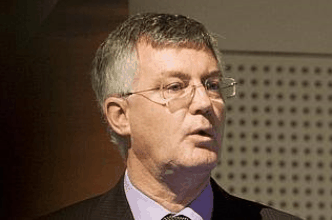
Times are certainly changing.
This time a decade ago I was working for the Australian Treasury. The mood was high, the Australian economy was motoring, and the Budget was starting to see the rivers of gold flow from the initial phase of the once-in-a-century commodity price boom.
In 2003, the Treasury had taken in its biggest ever intake of graduates and there were job opportunities galore, both within the department and amongst other areas within the Australian Public Service (APS).
Suffice to say, working under Treasurer Costello was easy. After dishing out some modest tax cuts the previous year (the 2003 Budget), there was the widespread expectation that he would once again play Santa Claus and return more funds to taxpayers in the form of income tax cuts.
And rather than something to fear, as is the case now, the Federal Budget was a time for celebration and a highlight for the Treasurer, who got to take centre stage and claim credit for Australia’s improving fortunes and his ‘gifts’ to taxpayers.
Fast forward ten years and the mood is the polar opposite. Commodity prices and the terms-of-trade are falling, crimping the tax take from profits, and workforce participation is entering a structural decline, brought about by the large scale retirement of the baby boomer generation. Rather than playing Santa Claus, the Government is now playing grinch to the electorate, attempting to unwind entitlement programs (albeit inconsistently) and implementing new taxes.
Public servants of all colours are also under the pump, with the May budget projecting that some 16,500 APS positions would be cut over the next three years, with the Government also doubling its efficiency dividend for APS departments to 2.5%.
Included in the job cuts are workers at my old employer, the Australian Treasury.
Today, The AFR is reporting that Treasury Secretary, Dr Martin Parkinson, will involuntarily lay-off 30 staff in order to meet cost cutting targets, with the department also set to lose one-in-three full-time staff by 2016-17, mostly via natural attrition. Further, Dr Parkinson has flagged that senior executive services officers (SES) are also facing lay-offs, as the department struggles to meet its objective of cutting 10% of SES staff this year.
I regularly meet with former workmates from the Australian Treasury, most of whom continue to work in other departments within the APS. And I can tell you that their mood is generally sour, with many now working far longer hours than was previously the case and worried about losing their jobs.
Arguably there is some scope to streamline operations and trim back office staff, given the large number of public sector agencies and duplication across federal and state levels.
But the ultimate test for the Abbott Government will be to ensure that the cuts do not impact adversely on front-line service delivery (e.g. nurses, teachers, social workers, etc) – which is where pain will be felt most by the voting public – as well as ensuring that the APS does not lose so much ‘corporate knowledge’ and expertise, that it can no longer provide sound advice to the Government.

